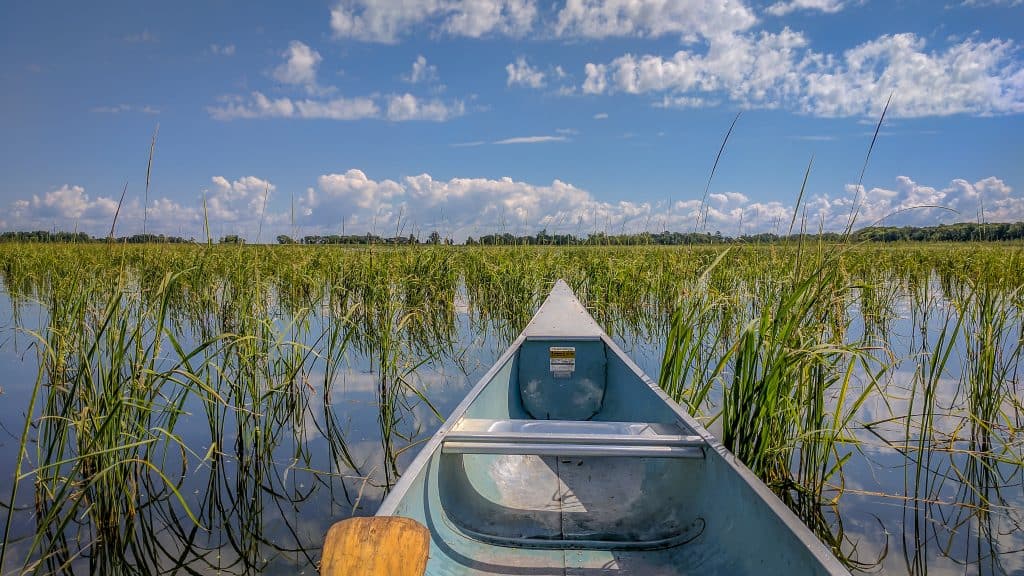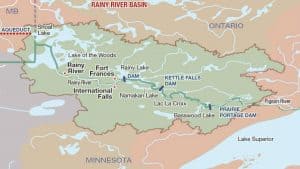
The American-Canadian organization in charge of managing international border waters has reported that the important food source and cultural resource wild rice, or manoomin, is suffering in historically-productive Rainy Lake.
International Joint Commission writer Kevin Bunch describes how damming along the chain of lakes and rivers on the Canadian border has made it difficult for rice to grow, and human manipulation of water levels has made it easier for invasive cattails to push out wild rice.
Cattails conundrum

The impact has been devastating for the Anishinaabe and Ojibwe people who have harvested the grain for centuries.
“One hundred years ago, the wild rice we harvested was a food staple and something that was just part of your diet, and we’d pick enough to last a year,” Allan Yerxa, lands and resources coordinator for the Couchiching First Nation, told IJC. “Nowadays it’s almost a luxury to have wild rice in your cupboard – that’s how it’s affected the First Nations people.”
Invasive hybrid cattails that grow in thick mats have created monocultures where manoomin once grew. The non-native plants thrive in the same habitat as wild rice, and muskrats are one of the only natural controls for the plants. But the aquatic animals can’t survive winters when water levels are being drawn down, and the population has been “abysmal” since the rules were changed in 2000.
Muskrats are also important for creating channels in wetlands that some fish use to spawn, and changing the fall drawdown should help invertebrate species that form the foundation of the food web in the lake.
Fluctuating water levels during growing and harvesting seasons can also cause the rice crop to fail.
It is hoped that new rules governing water level management that just went into effect this August may help wild rice survive. The new rule curves call for a quick drawdown in the fall, and more gradual drawdown during the winter. The new rules also allow for water levels to be managed for wild rice benefits if conditions allow.
Changes to the water level management will probably also reduce energy production by hydropower plants at the lake system’s dams.
Climate connections
Climate change’s effects on the weather are also blamed for hurting wild rice. The warmer and more energetic atmosphere leads to more extreme storms, which is believed to have contributed to increased flooding that has harmed communities along the waterways in recent years.
The storms can knock growing plants down, or knock the seeds off the plant before it’s harvested.
Heavy rains also wash soil and nutrients off the land and into the water, leading to algae growth and muddy waters that make it hard for rice to grow.
Ultimately, manoomin is a plant of northern climates, where it evolved to thrive in relatively sterile lakes with a short growing season. Global warming is making it easier for other plants to outcompete the rice.
Mining impacts
Wild rice is also harmed by increased levels of sulfate in the water. Sulfate in bottom sediments can convert to sulfide, which is harmful to almost all aquatic life.
The state of Minnesota has been conducting studies to consider revising its rules for sulfate discharges from taconite mines, which would also affect proposed copper-nickel mines in the Rainy Lake watershed.
As previously reported in Quetico Superior Wilderness News, the new studies have shown that the existing sulfate standard of 10 parts per million is pretty close to tolerable levels.
Earlier this year, the state of Minnesota cancelled a proposal to replace the 10 ppm standard with a formula that would derive a unique standard for every lake based on the amount of iron in the sediments and other factors. Regulators are working on a new proposal at this time.

